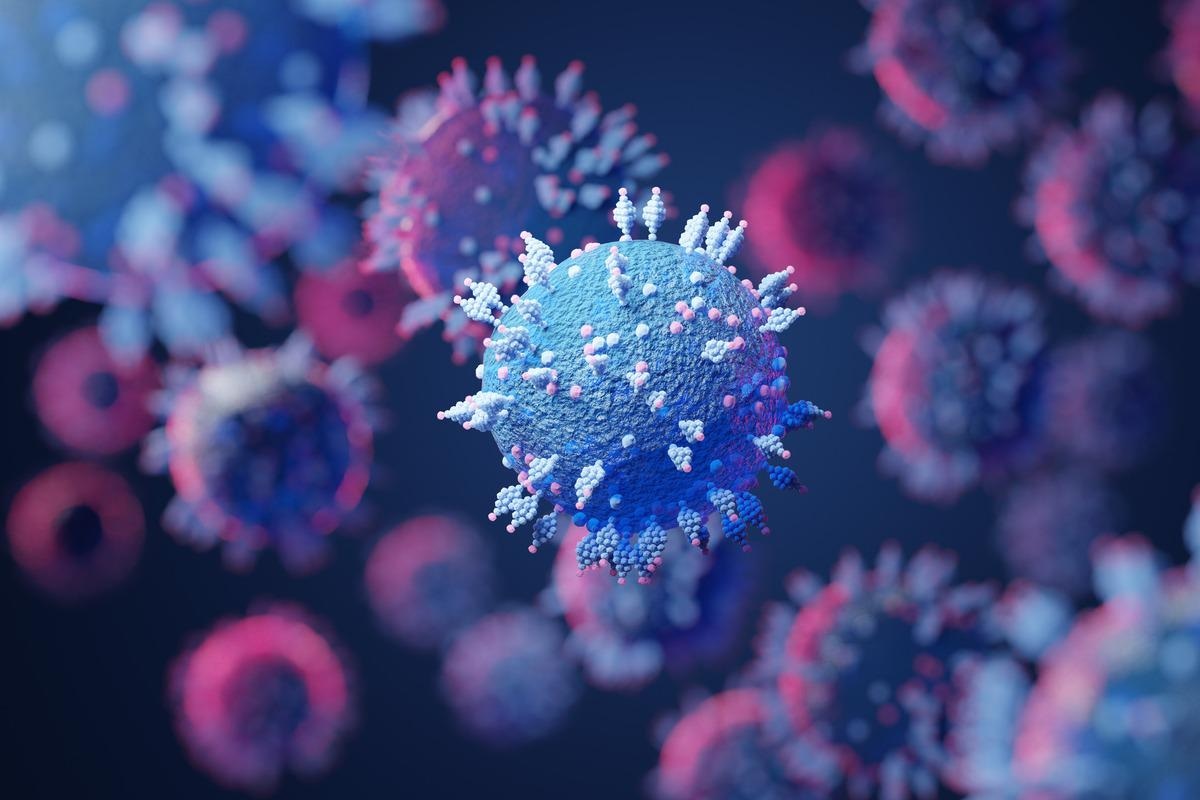In a recent study published in the journal Cell Host and Microbe, researchers demonstrated that four severe acute respiratory syndrome coronavirus 2 (SARS-CoV-2) Omicron sub-lineages, BA.1, BA.1.1, BA.2, and BA.3, are resistant to current coronavirus disease 2019 (COVID-19) vaccines and antibody therapeutics to varying extents.

SARS-CoV-2 Omicron sub-variant BA.1 first appeared in South Africa in November 2021. Then, the proportion of BA.2 sub-variant surged rapidly, and it became dominant globally. Currently, the prevalence of the BA.3 sub-lineage is very low but it too has been identified.
Hence, the evaluation and comparison of susceptibility of all the major Omicron sub-lineages to vaccine- or monoclonal antibody (mAb)-induced neutralization are urgently needed.
About the study
In the present study, researchers first assessed the neutralizing activity of sera from individuals vaccinated with two doses of inactivated whole-virion vaccine BBIBP-CorV. For this, they constructed the Omicron sub-lineage pseudoviruses (PsVs). Likewise, they collected sera from 20 healthy adults who had received an additional booster shot with the same BBIBP-CorV vaccine.
Next, they collected sera from 18 individuals who had received two doses of BBIBP-CorV after four to eight months of receiving a protein subunit vaccine. They also collected sera from individuals vaccinated with a two-dose regimen of inactivated vaccines before being infected by the SARS-CoV-2 Delta variant. These serum samples were obtained three to four months of breakthrough infection and evaluated against the four Omicron sub-lineage PsVs.
Further, they screened the PsVs against a panel of 20 mAbs, including 10 approved against the Omicron sub-lineages, to generate a mAb neutralization profile of all the four Omicron sub-lineages.
Lastly, the researchers performed a comparative study of the original Omicron BA.1 and the other emerging sub-lineages to determine the inherent differences in their immune evasion properties.
Results
The sera samples from individuals who received the BBIBP-CorV vaccine showed neutralization activity against wild-type (WT) SARS-CoV-2. However, their neutralizing activity was weaker against BA.1, with geometric mean titers (GMTs) of around 55. Notably, only two out of 10 vaccinees showed marginal neutralization against Omicron sub-lineages. These sera showed no neutralization activity against the three other sub-lineages. The data indicated that two doses of inactivated vaccine were inadequate to provide complete immune protection against Omicron sub-variants.
Around 15 sera samples from 20 recipients of booster shots exhibited detectable neutralizing activity against all four Omicron sub-lineages. Apparently, this sera showed a five to six-fold reduction against BA.1, BA.1.1, BA.2, and BA.3 sub-variants compared to WT.
The other cohort of 18 individuals maintained detectable neutralizing activity against all four Omicron sub-variants. However, GMTs showed a seven to 23-fold reduction in potency against Omicron sub-lineages compared to WT. Indeed, the study data highlighted the significance of vaccine boosters for eliciting neutralizing antibody responses against Omicron sub-lineages.
The breakthrough infection by Delta boosted the neutralizing titers significantly against WT, with a GMT of 1,740. However, the same did not hold for Omicron sub-lineages, and their neutralizing titers diminished more than 100-fold. Such high reduction values might be related to the antigenic difference between Delta and Omicron.
The neutralization titers were lower against BA.2 and BA.3 than BA.1, attributable to the heterologous booster. This finding indicated the receptor-binding domain (RBD) subunit vaccine booster-induced RBD-directed antibodies, which BA.2 and BA.3 evaded due to their unique mutations.
Omicron sub-lineages impacted the neutralizing potency of most of the mAbs, albeit with differences in neutralization patterns. Of the approved mAbs, seven were totally inactive or severely impaired in neutralizing all four sub-lineages. S309, the only approved antibody with some neutralizing activity against Omicron BA.1, lost neutralizing activity against BA.2 and BA.3. Conversely, COV2-2130 lost its neutralizing activity against BA.1 and BA.1.1 while remaining active against BA.2 and BA.3.
Notably, only LY-CoV1404, recently granted emergency use authorization (EUA), remained potent in neutralizing all Omicron sub-lineages.
Conclusions
To summarize, all the tested polyclonal sera lost neutralizing activity against the Omicron sub-lineages, BA.1.1, BA.2 and BA.3, much greater than BA.1, indicating all these sub-lineages are antigenically far from the WT SARS-CoV-2. Therefore, according to the authors, vaccine booster shots could still prove effective in containing SARS-CoV-2 transmission.
The distinct neutralization patterns of all four Omicron sub-lineages against mAbs further reflected antigenic differences. Thus, the authors recommended developing broadly neutralizing mAbs for use as a cocktail to contain the ever-evolving SARS-CoV-2.
- Ai, J., Wang, X., He, X., Zhao, X., Zhang, Y., Jiang, Y., Li, M., Cui, Y., Chen, Y., Qiao, R., Li, L., Yang, L., Li, Y., Hu, Z., Zhang, W., Wang, P., (2022). Antibody Evasion of SARS-CoV-2 Omicron BA.1, BA.1.1, BA.2 and BA.3 Sub-lineages. Cell Host and Microbe. doi: https://doi.org/10.1016/j.chom.2022.05.001 https://www.cell.com/cell-host-microbe/fulltext/S1931-3128(22)00243-8
Posted in: Medical Science News | Medical Research News | Disease/Infection News
Tags: Antibodies, Antibody, Cell, Coronavirus, Coronavirus Disease COVID-19, covid-19, Monoclonal Antibody, Omicron, Protein, Receptor, Respiratory, SARS, SARS-CoV-2, Severe Acute Respiratory, Severe Acute Respiratory Syndrome, Syndrome, Therapeutics, Vaccine

Written by
Neha Mathur
Neha is a digital marketing professional based in Gurugram, India. She has a Master’s degree from the University of Rajasthan with a specialization in Biotechnology in 2008. She has experience in pre-clinical research as part of her research project in The Department of Toxicology at the prestigious Central Drug Research Institute (CDRI), Lucknow, India. She also holds a certification in C++ programming.
Source: Read Full Article
